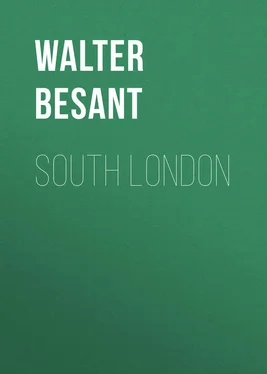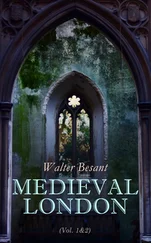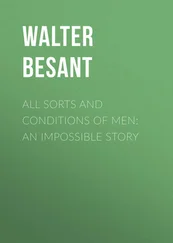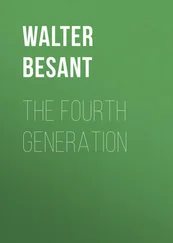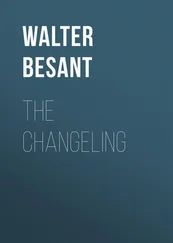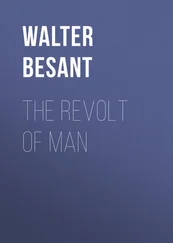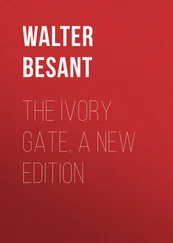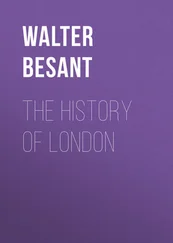Walter Besant - South London
Здесь есть возможность читать онлайн «Walter Besant - South London» — ознакомительный отрывок электронной книги совершенно бесплатно, а после прочтения отрывка купить полную версию. В некоторых случаях можно слушать аудио, скачать через торрент в формате fb2 и присутствует краткое содержание. Жанр: foreign_antique, foreign_prose, на английском языке. Описание произведения, (предисловие) а так же отзывы посетителей доступны на портале библиотеки ЛибКат.
- Название:South London
- Автор:
- Жанр:
- Год:неизвестен
- ISBN:нет данных
- Рейтинг книги:3 / 5. Голосов: 1
-
Избранное:Добавить в избранное
- Отзывы:
-
Ваша оценка:
- 60
- 1
- 2
- 3
- 4
- 5
South London: краткое содержание, описание и аннотация
Предлагаем к чтению аннотацию, описание, краткое содержание или предисловие (зависит от того, что написал сам автор книги «South London»). Если вы не нашли необходимую информацию о книге — напишите в комментариях, мы постараемся отыскать её.
South London — читать онлайн ознакомительный отрывок
Ниже представлен текст книги, разбитый по страницам. Система сохранения места последней прочитанной страницы, позволяет с удобством читать онлайн бесплатно книгу «South London», без необходимости каждый раз заново искать на чём Вы остановились. Поставьте закладку, и сможете в любой момент перейти на страницу, на которой закончили чтение.
Интервал:
Закладка:
The Roman remains found up and down the place prove my assertion that the people who lived here were what we should call substantial. One need not catalogue the long list of Roman trouvailles ; but, to take the more important, in the year 1819 there was discovered, in taking up the foundations of some old houses belonging to St. Thomas's Hospital, in St. Thomas's Street, a fine tesselated pavement, about ten feet below the surface of the ground. In the following year, in the area facing St. Saviour's Grammar School, seven or eight feet below the surface, there was found another, of a more elaborate design. Only a part of this was uncovered, as the Governors of the School forbade further investigation: it remains to this day still to be examined and unearthed, under the present potato and fruit market. At the entrance of King Street, at a depth of fifteen or sixteen feet, were found a great many Roman lamps, a vase, and other sepulchral deposits. And in tunnelling for a new sewer through Blackman Street and Snow Fields, in 1818 and 1819, and again in Union Street, in 1823, numerous Roman antiquities were discovered. In Trinity Square was found a coin of Gordianus Africanus. In Deverill Street, south of the Dover road, other coins were discovered; in St. Saviour's churchyard, a coin of Antoninus Pius. It has also been proved that an extensive Roman cemetery existed on the south of the ancient settlement. In the year 1840, when excavations were going on for the purpose of building a new wing to St. Thomas's Hospital, another tesselated pavement was disclosed, with passages and walls of other chambers, all built on piles, showing that the houses beside the causeway were thus supported in the marshy ground; Roman coins and pottery were also found here. Another pavement was discovered on the opposite side, south of Winchester Palace. On the river bank, at the corner of Clink Street, an ancient jetty was found; and in the new Southwark Street, deep down, groups of piles, pointed below, on which houses had been built. In many of the later buildings Roman tiles have been found. These remains are quite sufficient to prove that many wealthy people lived in Roman Southwark, and that they occupied villas built on piles beside the causeway.
Since, too, from the earliest times Southwark was famous for its inns, and since the same conditions prevailed in the fourth as in the fourteenth century, it is not unreasonable to suppose that the people who drove those long lines of packhorses laden with goods from London used Southwark as a place in which to deposit merchandise before taking it across the bridge; they halted in Southwark; they lodged in one of the inns: the place was most convenient for the City; storage was cheaper than on the river wharves; for strangers, the place was cheerful. In one respect, that of being a halting place and a lodging for traders, Southwark was like Thorney in its palmy days – a place of entertainment for man and beast. There was no forum here, as in Augusta; no place of meeting for merchants, such as Thames Street in Plantagenet times; there was no buying and selling, but there was continual coming and going, which made the place lively and cheerful.
Such were the origins of the settlements of South London. An embankment, a causeway, a fishery for the wants of Thorney first and of London next; then villas, put up by the better sort, attracted here, one believes, by the fresh air coming up the river with every tide, and by the quiet of the place. The settlement began quite early in the Roman occupation: this seems to be proved by the extent of the cemetery. The draining and drying of the low lands went on meanwhile gradually, gardens and orchards taking the place of the former marsh.
The place has always, save at rare intervals, been entirely defenceless. The Pax Romana protected it. Remember that London itself was not walled till the latter part of the fourth century. Why should it be? For more than three hundred years, for ten generations, the City knew no wars and feared no invader. The 'Count of the Saxon Shore' beat back, and kept back, the pirates of Norway and Denmark; the Legions beat back the marauders of Scotland and Ireland. Southwark, like the City its neighbour, needed no wall and asked for no defence.
Twice, before the arrival of the East Saxons, we get a glimpse in history of South London. The first is the rout of the usurper, the Emperor Allectus, after the battle of Clapham Common.
Towards the close of the third century the succession of usurpers who sprang up everywhere in the outlying portions of the Empire contained six who came from Britain. What effect these movements had upon the security of South London we have no means of learning. The history, however, of Carausius and his successor Allectus affords material for reflection. The former, who was of Belgian origin, rose to be the Count of the Saxon Shore – in other words, Admiral of the Roman Fleet. In this capacity he kept the seas free from pirates; enriched himself, became famous for his courage and his generosity; usurped the title of Cæsar, fought with and defeated the fleets of Maximian, and reigned in Britain for seven years. His headquarters were Boulogne and Southampton; near the latter place – at Bittern – is still seen the quay at which his ships were moored. His rule, of which we know little, was certainly strong and firm. Coins exist in great numbers of Carausius. They represent his arrival: 'Expectate, veni' – 'Come, thou long-expected!' Then his triumph: 'Shout IO ten times.' He held gladiatorial sports at London; he appointed a British senate. Then came the time when he must fight or die. Like the King of the Grove, the Usurper held his throne on that condition. Carausius, for some unknown reason, would not fight when the chance was offered – therefore he died. Another King of the Grove, Allectus by name, one of his officers, killed him and reigned in his stead. Then he, too, had to fight for crown and life. He accepted the challenge; he awaited with an army of Franks and Britons the arrival of the Roman forces sent to quell him: he awaited them in London. When the enemy drew near, he led out his men across the Bridge, and gave battle to the Roman general, Asclepiodotus, on the wild heath south of London, immediately beyond the rising ground – we now call the place Clapham Common – and there he fell bravely fighting. He had enjoyed the purple for three years. Perhaps, when he crossed the Bridge, conscious that he was going to meet his fate – either to continue an Emperor for another spell or to die – he reflected that for such a splendid three years' run it was worth while to risk, and even to lose, his life at the end.
This is, I say, the first glimpse we get of South London in history. We see the army marching across the Bridge and along the Causeway, shouting and singing. We see them a few hours later, flying from the field, rushing headlong over the Causeway, through the lines of villas to the Bridge. The terrified people, those who lived in the villas, are running over the Bridge after them. Once across the Bridge, the soldiers found that there was left in the City neither order nor authority. They therefore began to sack and pillage the rich houses, and to murder the inhabitants. Remember that all over the Roman Empire none were permitted to carry arms except the soldiers. Therefore there could be no defence. The pillage went on until the victorious general had got his army – or some of it – across the Bridge. How long it would take to bring up his troops, whether the Bridge was held by the Franks, whether the defeated army made any organised opposition, we know not. All we are told is that the Roman soldiers fought hand to hand with those of the dead Usurper in the streets of London, and that the latter were all massacred.
In the year 457 we get a second glimpse of Southwark in the flight of another defeated host. The Britons had gone forth to fight the Saxon invaders; they met the enemy – Hengist and Æsc his son – at 'Creeganford' – Crayford: they were defeated; four thousand of them were killed; they fled; they never stopped until they reached London Bridge; we can see them flying bareheaded, without weapons, along the Causeway and through the narrow gates of the Bridge. Alas! the old villas along the Causeway are deserted and in ruins; the place has been desolate for many years – since the Saxons began to swarm about the country; the former residents, if they are living still, are behind the walls; and their sons are carrying on the war which is to last two hundred long years, and to leave its memories of hatred behind it for fifteen hundred years at least. The gardens are grown over, the orchards are neglected, the inns are empty and ruinous.
Читать дальшеИнтервал:
Закладка:
Похожие книги на «South London»
Представляем Вашему вниманию похожие книги на «South London» списком для выбора. Мы отобрали схожую по названию и смыслу литературу в надежде предоставить читателям больше вариантов отыскать новые, интересные, ещё непрочитанные произведения.
Обсуждение, отзывы о книге «South London» и просто собственные мнения читателей. Оставьте ваши комментарии, напишите, что Вы думаете о произведении, его смысле или главных героях. Укажите что конкретно понравилось, а что нет, и почему Вы так считаете.
